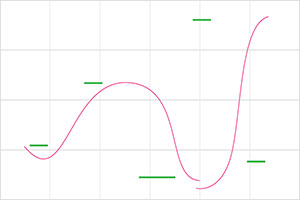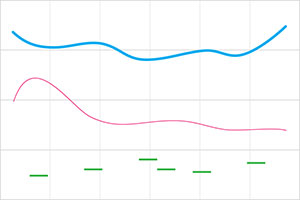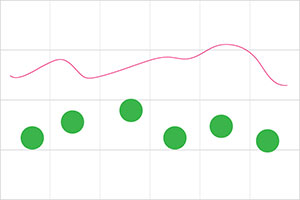Understanding music
Pitch
The element of pitch has three facets:
pitch,
melody and
harmony.
Pitch
Pitch describes how high or low a sound is:

Ideas for learning about pitch
Sirens
Get students to begin all together, singing on one lower register note and then slide (glissando) their way up giving their attention to staying in unison to the highest note that they can comfortably reach. During the exercise, play with the sliding scale, stopping students at a particular note to find its pitch on the piano or keyboard. Stop some students at a particular lower note asking them to hold that note (and take staggered breaths) and then allow the other half of the class to slide up to different intervals above the note – such as a second, a third, a fifth and a seventh. Ask students to notice which intervals work in harmony.
Parrot phrases
This is a call and response game. Sit the students in a circle and ask each one to sing a very short combination of notes (no more than five or seven notes). The notes could be arranged in a melody or be random intervals. Then the other students sing that melodic pattern back together. Work your way around the circle until students are comfortable experimenting with melodies, then ask students across the circle to see if they can come up with a second melody that might work as a harmony with the first.
Drone
Play a single note on a tone generator or drone instrument such as keyboard with sustain. Give students melodic percussion instruments such a glockenspiel and allow them to compose either short melodies or repeated harmony notes to go over the drone.
Activity
Not all instruments can play melodies. Experiment or research to create lists of ‘tuned’ instruments (those that can play melodies) and ‘untuned’ instruments (those that are unable to produce specific pitch/es).
Melody
Melodies are usually made up of sounds of similar pitch combined with several leaps in pitch. You can think about melody as an exaggeration of the highs and lows we use expressively in speech.
Melody occurs when sounds of different pitch and length (duration) are combined:

Listen
Examples of melody
Traditional (Irish folk), flute melody: ‘Danny Boy’, performed by James Galway, James Galway and the Chieftains,
Celebrating 70: A Collection of Personal Favourites, Sony Music Entertainment, 2009
Contemporary (pop), vocal melody: ‘Someone Like You’, written by Adele and Dan Wilson, performed by Adele (vocals) and Dan Wilson (piano) on the original recording,
Adele21, XL, 2011
Harmony
Harmony is the overlay of pitched sounds. This can take a number of forms. It may be the overlaying of two melodies:

Or it could be a melody with chords (two or more notes of different pitch) or a mixture of the two.

Listen
Examples of harmony
Classical (baroque), string harmonies: ‘Pachelbel’s Canon’, performed by Stringspace String Quartet, Stringspace Live channel
Contemporary (country/folk), vocal unison and harmonies: ‘My Silver Lining’, written and performed by First Aid Kit (Klara and Johanna Söderberg), from
Stay Gold, Jagadamba, 2014
Back to Top